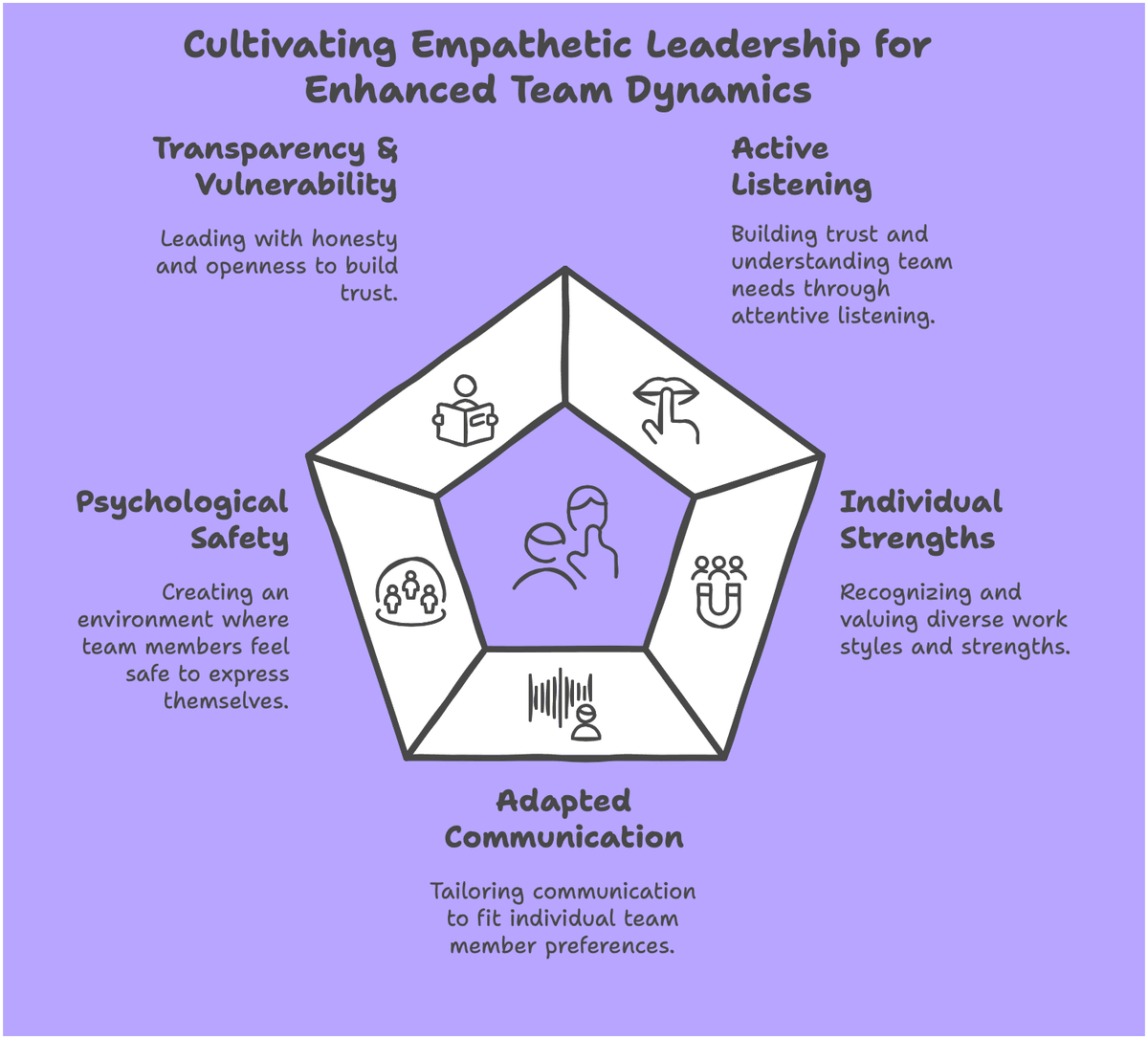Empathetic leadership is a crucial skill that drives team performance, engagement, and business success. At a time when workplaces are becoming more complex — whether due to remote work, diverse teams, or rapid change — leaders who genuinely understand their teams create environments where people thrive.
Those same complexities tend to force leaders to focus on goals, deadlines, and metrics; sometimes at the expense of their people’s well-being. But what if understanding your team better actually led to higher productivity, stronger collaboration, and more sustainable success?
The Business Case for Empathy in Leadership
Empathy isn’t about being overly soft or avoiding difficult decisions. Instead, it’s about tuning into the needs and motivations of your team, so you can lead them more effectively. Studies consistently show that companies with empathetic leadership outperform their competitors:
- Retention & Engagement – Employees are more likely to stay in organisations where they feel understood and valued.[1]
- Productivity – Teams with empathetic leaders report higher levels of job satisfaction and motivation.[2]
- Innovation – When people feel psychologically safe, they’re more willing to share ideas, take risks, and drive creative solutions.[3]
Real-World Example: Understanding Neurodivergent Employees
In one of my previous assignments, a team member had been perceived as slow, disengaged, and inefficient. However, I recognised that the real issue wasn’t a lack of ability, but how they were being managed. This individual was neurodivergent and needed tasks framed differently. Instead of micromanaging or writing them off as underperforming, I tailored my communication and task assignments to their working style with the result that their productivity and job satisfaction improved, and they became a valuable asset to the team.
This experience reinforced an important truth:
People don’t underperform because they lack talent — they underperform when their strengths aren’t recognised or used effectively.
Practical Steps to Become a More Empathetic Leader
If you want to lead with empathy, here are some actionable steps:
1. Listen More Than You Speak
Great leaders ask questions and genuinely listen to responses. Whether in one-to-ones or team meetings, active listening builds trust and helps uncover challenges before they escalate.
2. Understand Individual Strengths & Work Styles
Not everyone operates the same way. Some thrive on structure; others need autonomy. Tools like StrengthsFinder, or informal check-ins can help you map out the different working & communication styles within your team.
3. Adapt Your Communication
A one-size-fits-all leadership approach doesn’t work. Adapt how you provide feedback, set expectations, and delegate tasks. A useful approach is asking the team to each create a Manual of Me[4], which helps individuals articulate their preferred method(s) of communication.
4. Create Psychological Safety
Teams perform better when they feel safe to express ideas or concerns without fear of backlash. Foster a culture where asking for help isn’t seen as weakness but as a smart way to solve problems.
5. Lead with Transparency & Vulnerability
Empathetic leaders don’t pretend to have all the answers. They admit when they’re unsure and invite their team into the problem-solving process. This builds authenticity and trust.

Conclusion: Empathy as a Competitive Advantage
Empathy isn’t just a leadership buzzword; it’s a strategic advantage. Leaders who prioritise understanding their teams foster loyalty, drive performance, and create organisations where people want to stay and grow.
Are you leading in a way that brings out the best in your team? If not, small changes in how you listen, communicate, and support your people can make a significant difference.
References
- Catalyst. "Empathic Leaders Drive Employee Engagement." Catalyst.org
- Center for Creative Leadership. "Empathy in the Workplace: A Tool for Effective Leadership." cclinnovation.org
- Catalyst. "The Power of Empathy in Driving Innovation." Catalyst.org
- Manual of Me. https://www.manualof.me

